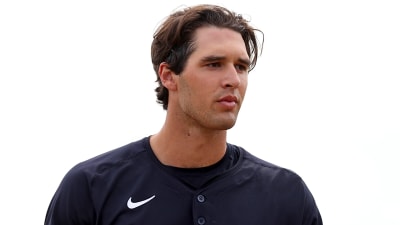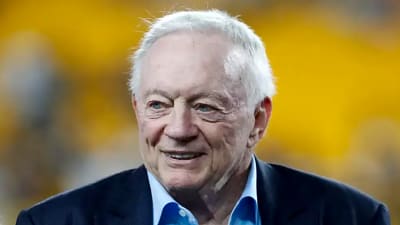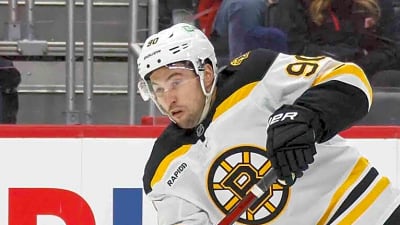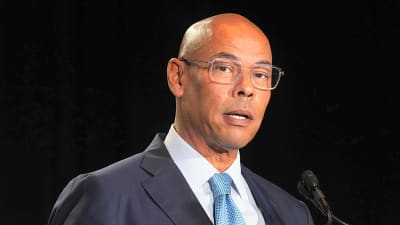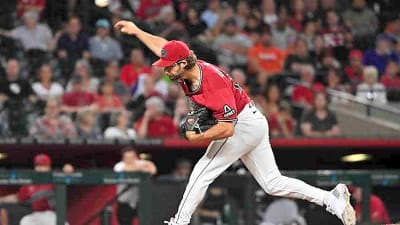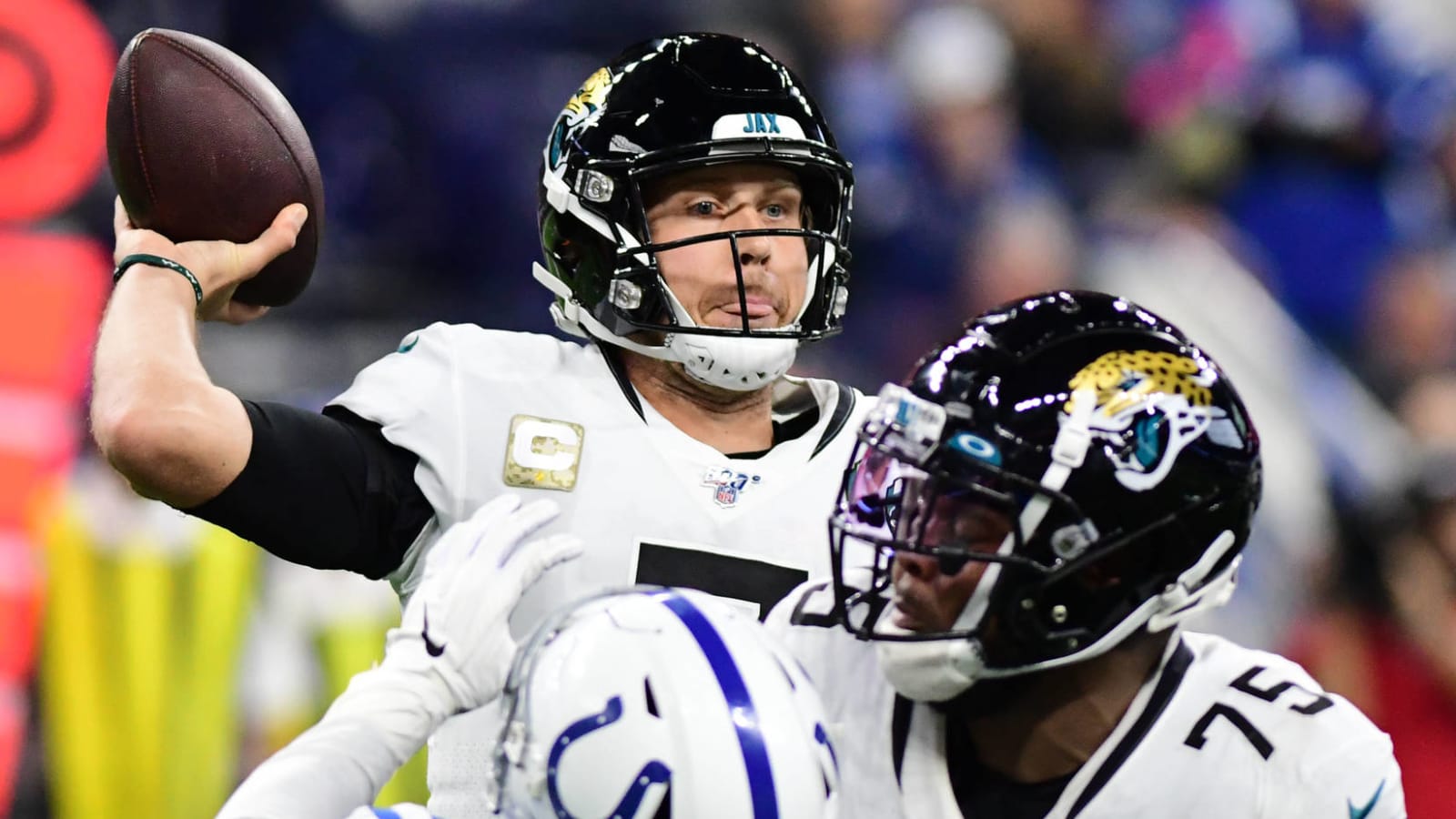
Why offseasons for Bears, Giants, Texans are NFL's most baffling
Free agency is down to a trickle. The NFL Draft looms. Yardbarker's Chris Mueller, Sam Robinson and Michael Nania offer the teams whose offseasons have been the most baffling.
MUELLER: You have to feel for Bears fans. They probably thought the needle was pointed up after a 12-4 season in 2018, even though it ended with the infamous “Double Doink” loss to the Eagles in the wild-card round. Then the 2019 season happened, and while Chicago’s defense was still championship-caliber, the offense was a disaster with Mitch Trubisky under center.
General manager Ryan Pace’s efforts to fix things on the fly this offseason have been baffling. Chicago used a compensatory fourth-round pick to acquire Nick Foles from the Jaguars, with Pace intimating that Foles would be in an open competition with Trubisky for the starting job. The move reunites Foles with three familiar faces: Bears head coach Matt Nagy, his quarterbacks coach with Kansas City in 2016; Bill Lazor, his quarterbacks coach during his breakout 2013 in Philadelphia; and John DeFilippo, who had the same role with the Eagles during their 2017 Super Bowl season.
It also throws the quarterback situation into upheaval. If Foles can’t beat out Trubisky, he becomes an expensive backup, with a $15.6 million cap hit, per Spotrac, and a $20.1 million dead cap charge. If Foles does win the job, Trubisky’s time in the Windy City is likely over, and his tenure with the Bears almost a complete bust. There are no guarantees that Foles performs well, either. He has made a considerable amount of money off a handful of great playoff performances.
The quarterback situation is the major issue, but Pace hasn’t bathed himself in glory with his other moves. Chicago lost HaHa Clinton-Dix in free agency, filling that void by bringing back safety Deon Bush, who played just 58 defensive snaps in 2019. Chicago brought in Artie Burns, ostensibly to compete for a starting cornerback spot opposite Kyle Fuller, but Steelers fans are probably laughing at the mere mention of Burns and “starting” in the same sentence. Burns was banished to the bench in Pittsburgh, playing a total of 67 defensive snaps in 2019 -– 62 of them in one game –- and steadily declined after a solid rookie year in 2016.
The Bears also signed tight end Jimmy Graham, who is 33 and coming off two mediocre seasons in Green Bay for a team desperate for weapons besides Davante Adams. Although edge rusher Robert Quinn could be a good complement to Khalil Mack, his resurgence last year with Dallas may have been a mirage, considering his three prior seasons. Graham was more expensive than Eric Ebron (signed by Steelers), who is seven years younger and caught 13 touchdowns in 2018, and Quinn got $30 million guaranteed.
Most of Pace’s moves look desperate and short-sighted. He failed to significantly upgrade the team at multiple positions of need, and settled for lesser talents when more impactful players were there for the taking. If Foles doesn’t catch lightning in a bottle, the Bears will be in big trouble, and Pace’s awful offseason will be a big reason why.
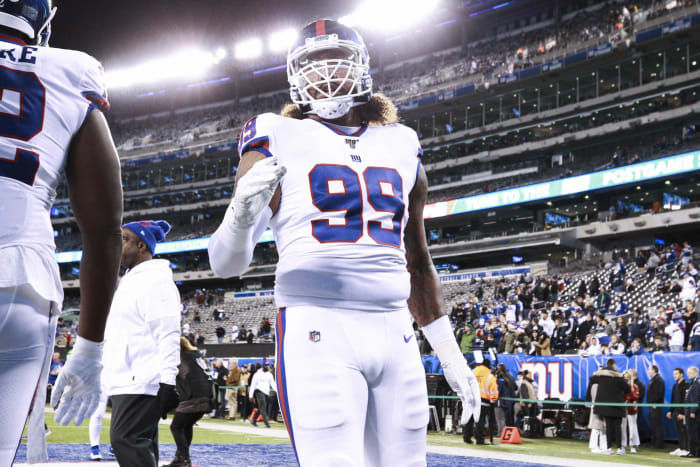
Giants: Franchise tag on Williams doesn't make sense
ROBINSON: Entering free agency with more than $70 million in cap space and major needs at several spots, the Giants spent curiously. The team made multiple ill-advised decisions, but using its franchise tag on defensive lineman Leonard Williams revealed more about the franchise’s thinking and current status near the NFL’s basement.
Despite being 2-6 at the trade deadline last season, GM Dave Gettleman made a buyer’s trade by acquiring a contract-year defender from the Jets. A top-10 pick in 2015, Williams has trended downward since a 2016 Pro Bowl invitation (as an alternate). The Giants entered free agency with a strong defensive line, by far their best defensive position group. Dalvin Tomlinson and B.J. Hill joined 2019 first-rounder Dexter Lawrence in ranking as top-20 interior defenders, per Pro Football Focus, last season. Only the Giants and Steelers had three interior D-linemen grade as such. Williams landed inside the top 40, but the $16.1 million tag salary is out of step with his NFL accomplishments and an unnecessary payment given the Giants’ D-line depth.
That price places Williams on a tier on which he does not belong; he’s set to earn a salary on the level of Fletcher Cox, Grady Jarrett and J.J. Watt. Williams has been a solid pressure artist, ranking 12th in quarterback hits (101) since 2015. Yet he somehow ranks 84th in sacks (17.5) in that span, creating a staggering gap. Williams finished last season with a half-sack. No team was going to pay Williams $16M per year on the market, and the Giants bizarrely placed his price floor there because of the tag. With Williams’ value not on that level, an extension that would lower his cap number being reached by July 15 may be unlikely. This will limit the Giants. Of course, a long-term deal containing more guaranteed money might be a worse move.
The Giants did not devote valuable resources toward off-ball linebackers during Jerry Reese’s 11-year GM tenure. Given their diminishing value in today’s NFL, that makes sense. Gettleman, however, traded two draft picks for Alec Ogletree’s high-priced contract in 2018 and, weeks after cutting Ogletree this year, he paid Blake Martinez nearly the same amount ($10.25M per year). Martinez’s 443 tackles since 2017 lead the NFL, but the Packers let him walk for a reason. In each of the past two years, he allowed a passer rating north of 100 when targeted. The latter skill has become more important.
James Bradberry, a No. 1 cornerback in his four-year tenure in Carolina, is a solid player. But the zero-time Pro Bowler was signed by the Giants to an All-Pro-level contract, thanks largely to Gettleman having drafted him in the 2016 second round during his time as Panthers GM. This three-year, $43.5M deal –- making Bradberry the NFL’s fourth-highest-paid corner –- may not help the Giants rebound considerably from their No. 31 DVOA pass-defense ranking. Since 2017, Bradberry has allowed five more plays of 15-plus yards (53) than any outside corner.
Devoting this much money to slightly above-average players and not seriously addressing their most glaring need – at edge defender -- is odd. That descriptor summarizes Gettleman’s Giants GM tenure.
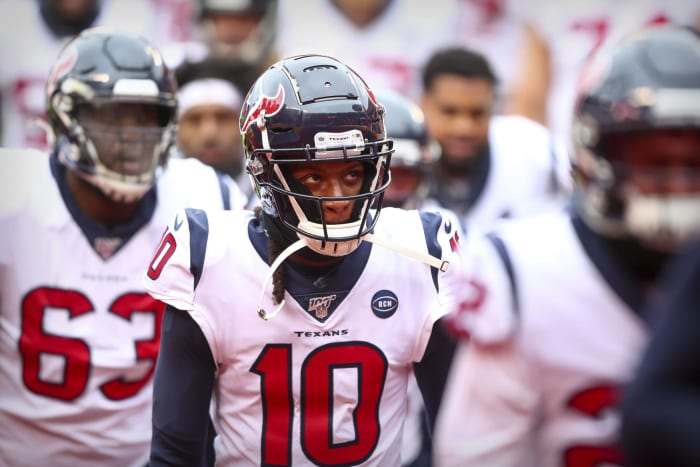
Texans: Hopkins trade not only bad move
NANIA: Houston could have done nothing else wrong outside of sending stud wide receiver DeAndre Hopkins to Arizona, and its offseason would still be one of the worst. In dealing Hopkins to the Cardinals, the Texans acquired running back David Johnson, a two-round improvement in this year's draft (Houston gave up a fourth-round pick for a second-round pick), and a fourth-rounder in next year's draft. That's a highway robbery by Arizona.
Hopkins had a special chemistry with Deshaun Watson, who had a 110.3 passer rating in his career when targeting the star receiver. He ranked second in receiving yards (7,800) and second in receiving touchdowns (52) since 2014.
Johnson, who has regressed the past couple seasons, will have the third-largest cap hit among running backs in 2020 ($11.2 million). Since 2017, he has averaged a measly 3.6 yards per rush attempt (41st of 42nd qualified RBs). After averaging 3.9 yards per attempt over his first seven games in 2019, Johnson ceded the starting job to Kenyan Drake, who averaged 5.2 yards per attempt behind the same offensive line. Johnson is a good receiving back (fourth among RBs with 7.9 yards per target in 2019), but he has missed 18 games with injuries over the past three seasons.
The first move Houston made in an effort to replace Hopkins was the signing of former Cowboys slot receiver Randall Cobb. Cobb had an excellent 2019 season in Dallas, picking up a first down on 49.4% of his targets (league average 34.7%) and averaging 10 yards per target (10th best among wide receivers). However, that was an outlier season for Cobb, who showed signs of decline over his previous two seasons (6.8 yards per target and a 31.4% first-down rate). He is also going to be 30 before the season begins. Houston gave Cobb $18M in guaranteed money, 29th most among wide receivers, which seems a bit rich.
On defense, Houston curiously allowed defensive tackle D.J. Reader to walk. He received a four-year, $53 million deal from Cincinnati -- admittedly hefty -- but Reader offered strong run defense and pass-rushing on the inside for a team that struggled with both. Among 57 qualified interior defensive linemen, Reader earned Pro Football Focus' third-best run defense grade (83.3) and 12th-best pass-rushing grade (75.4). Houston, meanwhile, ranked 27th in yards per rush attempt allowed (4.8) and 31st in pressure rate (18.1%). The Texans must think about keeping room open for long-term deals for Watson and offensive tackle Laremy Tunsil, but they did have the league's ninth-most cap space ($61.3 million) entering free agency.
All things considered, this was a truly baffling offseason.
More must-reads:
- And the winner of NFL offseason so far is ...
- Bears, Redskins, Texans did what?! 10 head-scratching NFL moves
- The 'NFL head coaches' quiz
Breaking News
Trending News
Customize Your Newsletter
 +
+
Get the latest news and rumors, customized to your favorite sports and teams. Emailed daily. Always free!


